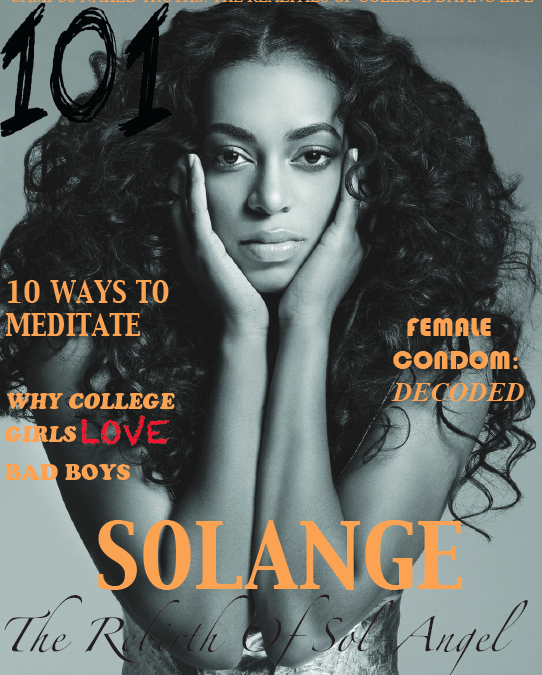
by Yanick Rice Lamb | Aug 16, 2018 | |
Publication No. 11 Creative Work/Article Lamb, Y.R. (March 29, 2018). “50 Years After the Kerner Commission, Little Progress for People of Color in Media.” Women’s Media Center.http://www.womensmediacenter.com/news-features/50-years-after-the-kerner-commission-little-progress-for-people-of-color-in-media Synopsis Fifty years ago, the Kerner Commission blamed media portrayals, or lack thereof, for contributing to nationwide uprisings in the summer of 1967 by African Americans who were sick and tired of being sick and tired, to paraphrase Fannie Lou Hamer. The National Advisory Commission on Civil Disorders, as it was officially called, appointed by President Lyndon Johnson to investigate the underlying causes of the unrest, made some sobering findings, concluding, “Our nation is moving toward two societies, one black, one white — separate and unequal.” It also found that the media presented a fragmented picture to the public that failed to show the everyday lives of black and brown people and that underplayed disparities in areas such as education, housing, employment, income, health, and policing. To mark the 50th anniversary of the report, commemorative conferences, studies, and other research have assessed progress in the last half-century. The picture is decidedly mixed, with African-American unemployment, for example, consistently remaining about double the rate for whites, the Economic Policy Institute found. More people of color work in some segments of media, but nothing near fair representation. Coverage is more diverse, but stereotypes and distortions persist. Impact This article was circulated widely on social media with references to many of the points for the need for more diversity in journalism to reduce stereotypes and misleading coverage. Black journalists’ expertise and sensibilities are essential to providing a fair and balanced view of the world, especially communities of...

by Yanick Rice Lamb | Aug 13, 2018 | |
Publication No. 2 Major Production: In-Depth Special Report Title: “The Toxin Connection: The Impact of Rubber Production on Health in Northeast Ohio” Principal Investigator: Lamb, Yanick Rice Synopsis “The Toxin Connection” is an interactive series examining occupational and environmental health in an industrial community as part of a Social Justice Investigative Journalism Fellowship. The focus is on the generational impact of toxins that have resulted in elevated levels of cancer and auto-immune diseases. Multimedia will include photos, video, data visualization and mapping. I have been conducting in-depth interviews with patients, physicians, researchers, environmentalists and politicians as well as health, public policy, industry and public officials who essentially gave corporations a pass by maintaining low regulatory standards. Impact/Recognition This is an under-reported environmental and medical story. The goal of “The Toxin Connection” is to provide public service journalism by answering questions long on the minds of local residents who have endured decades of silence and indifference like in Flint, Michigan. My investigation would sort through myths and facts; dig into the data and other research to highlight why disease rates are so high; discuss genomics; and delve into allegations of political inaction, and corporate influence or suppression of possible health risks. I would examine health care over the years, environmental monitoring historically, and the status and impact of legislation, including the Toxic Substances Control Act. My project has been accepted for publication in Belt Magazine and the Cleveland Plain Dealer. I was awarded a $8,800 grant from the Schuster Institute for Investigative Journalism at Brandeis University and the Fund for Investigative Journalism, which includes representatives from leading news organizations such as the Chicago...

by Yanick Rice Lamb | Aug 10, 2018 | |
Publication No. 8 Pending Research Refereed Journal Article (Under Review) Lamb, Y.R. (Under review). “The Impact of Body Mass Index on Women’s Physical Health Ratings, Fibroids, Anemia and Infertility.” Journal of the National Medical Association (Elsevier). Abstract Obesity is considered a global epidemic that will be the leading cause of death by 2020, according to the World Health Organization (WHO). This research supports the regression-related central organizing hypothesis (COH) that the Body Mass Index is explainable by physical health ratings for women across racial and ethnic groups and their self-reports of diagnosed fibroids, anemia and infertility. Multiple regression and percent distribution were used to address the COH by analyzing data from the Collaborative Psychiatric Epidemiology Surveys (CPES) as part of the National Survey of American Life (NSAL), 2001-2003. Based on the differential effects theory, this research helps to fill a void in the literature on reproductive health through the lens of obesity as it relates to race, ethnicity and gender. It may also have clinical and public health implications, such as enhancing awareness and wellness outcomes among black women who suffer disproportionately from obesity, infertility, fibroids and anemia, which is a risk factor for pregnancy complications and low birthweight. Impact The intersection of reproductive health and obesity are rarely discussed as they relate to black women, who are already disproportionately affected by health disparities. African-American women are at the center of the global obesity epidemic that WHO predicts will be the leading cause of death by 2020. About four out of five African-American women are overweight or obese — the highest rate of any group in the United States (Office...

by Yanick Rice Lamb | Aug 10, 2018 | |
Publication No. 28 Creative Works: Special Project Title: 101 Magazine and 101Magazine.net Principal Investigator, Founder and Adviser: Lamb, Yanick Rice Published by Howard University APT Criteria My management, research and development of 101 Magazine meets criteria No. 8 set forth on page 9 in Appendix A of Recommendation 305-2015 as an Exemplary Creative/Professional Activity and No. 10 on page 11 under High Creative/Professional Activity: Criteria No. 8. Development or application of technology for communication enterprises or for the educational community, including new and existing websites; regularly maintained and nationally recognized web logs (blogs) and video logs (vlogs) Criteria No. 10. Development and management of meritorious special projects of an academic or professional nature that exceed normal expectations of teaching and/or instruction and supervision of co-curricular programs, and that achieve recognition on local, regional, national or international level and/or other targeted area deemed of significance. The candidate must also prepare a detailed report and critique of the activity. Synopsis 101 is a general-interest magazine that knows how to have fun, when to be serious and what it takes to hold the attention of 18 to 29-year-old students who are busy chasing their dreams. 101 has an urban sensibility with a global outlook. Although based in the United States, 101 strives to offer a world view with a mix of domestic and international topics. It includes news, features, analysis, commentary, service and trend pieces; profiles; and gazettes. 101 serves a diverse group of men and women who want to stay in the know about issues that affect their lives. They are intelligent, progressive and upwardly mobile. They want more than the standard fare being offered in...

by Yanick Rice Lamb | Aug 10, 2018 | |
Publication No. 25 Creative Works/Article Collection Research and Reporting on Lifestyles and Popular Culture Role: Researcher and writer Impact and Reach This collection of research and reporting on lifestyles and other features help to provide balance to coverage of African Americans that’s far too often negative. In fact, coverage throughout the diaspora has a disproportionate focus on what I call the three Cs: coups, crisis and crime. These articleshighlight unreported and underreported topics and trends. Some of them are historic (Althea Gibson and Ruby Dee), some are serious (self-esteem issues and self-hatred due to discrimination, including colorism), some are heartfelt (my experience teaching at Howard) and some are light-hearted (popcorn addiction, the Capital Jazz Fest, tips for those who lose vacation days, and grandmas who don’t want to be called grandma — such as yours truly, Nini). Coverage of such topics can help to increase understanding among various segments of the population and “normalize” racial and ethnic groups often seen as the “other,” by sharing our achievements, the full range of our humanity, common interests and slices of everyday life. As the late journalist Les Payne often pointed out, for example, the media often acts as if it doesn’t snow on the homes of people of color during blizzards. When we’re out of sight and out of mind, it can have a snowball effect (pun intended) on more serious matters. Writing such articles is also helpful in discussing different writing styles and topics with my students. They have been widely distributed, including: Black AmericanWeb.com, the companion site for the Tom Joyner Morning Show, the No. 1 nationally syndicated radio programs with...







Recent Comments